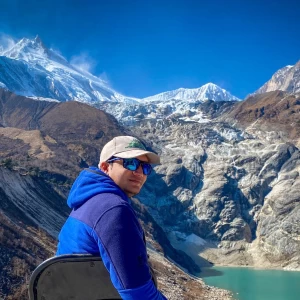Explore the top 10 places for white river rafting in Nepal, where thrilling rapids and stunning landscapes promise an unforgettable adventure on some of the world's best rivers.
10 Places To Go For White River Rafting in Nepal
Table of Contents
Nepal is famous for its incredible white river rafting experiences. With over 6,000 rivers, it’s one of the best places in the world to raft. Each river offers something unique, making Nepal a top destination for rafting enthusiasts.
Nepal's rivers come straight from the Himalayas, giving them power and beauty. The white sandy beaches along the rivers add to the thrill. Whether you're a beginner or an expert, rafting in Nepal is an adventure you won’t forget.
This guide will help you explore the 10 best places for white river rafting in Nepal.
Also, check, Best Hike in Nepal
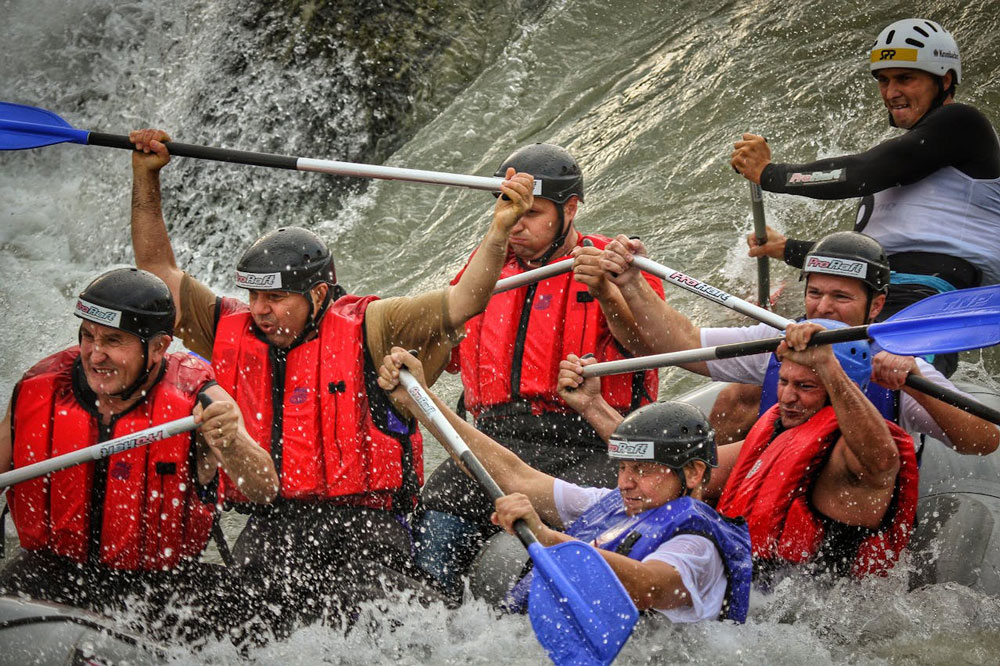
What is White River Rafting?
White river rafting is an adventure sport where you navigate rivers in a raft. The thrill comes from the strong currents and waves. It stands out from other water sports because it focuses on teamwork and navigating the river’s challenges. The excitement of facing rapids makes it a popular choice for adrenaline seekers.
Additionally, rafting in Nepal is special because of its rugged terrain. The fast-flowing rivers here make it unique. Rivers like the Trisuli River, Bhote Koshi, and Kali Gandaki originate from the Himalayas. These rivers are perfect for rafting. Each river offers different challenges. Some are easy for beginners, while others are tough for experts.
The Grading System: Understanding Rafting Difficulty Levels in Nepal
Understanding the rafting grades ensures safety and enhances the rafting adventure in Nepal. By understanding this concept, you can plan the perfect river trip for you.
What Are Rafting Grades?
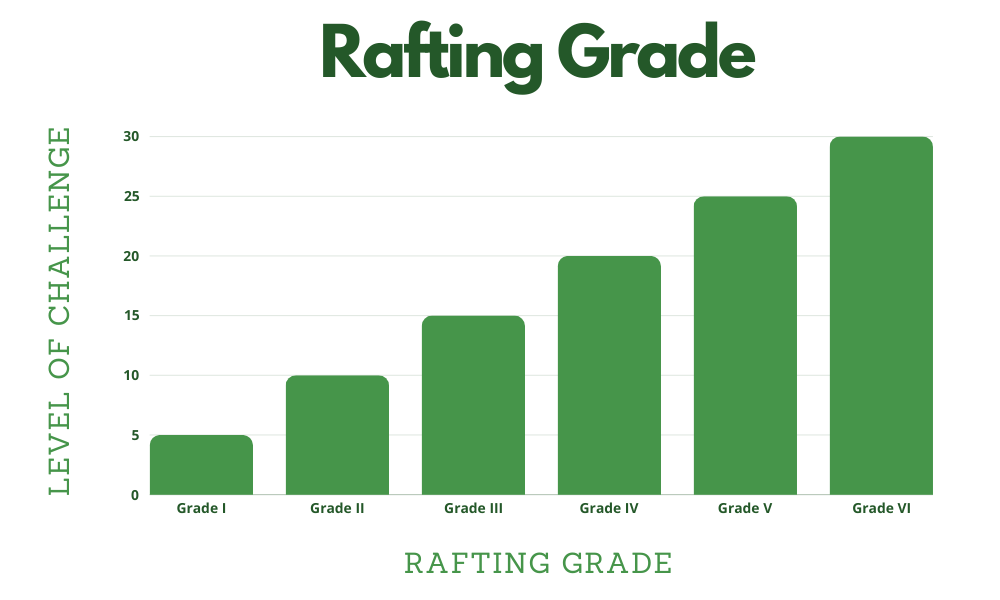
The rafting grade system helps adventurers choose rivers that match their skill level. It ranges from easy, calm waters to extremely challenging rapids. Understanding these grades ensures safety and an enjoyable experience. Globally, rafting grades are classified from Class I (easy) to Class VI (extremely challenging).
In Nepal, the grades reflect similar standards, with many rivers offering diverse experiences. Beginners may start with Class I or II. Experienced rafters often seek out the thrilling Class IV rapids and more.
How to Choose the Perfect Grade for You
The grade you select should match your experience, fitness level, and thrill preference.
If you're new to rafting, start with Class I or II, which are easier and less demanding. These grades are perfect for beginners or those looking for a relaxed river trip. They offer gentle rapids and are ideal for families or those with lower fitness levels.
For more experienced, Class III or IV rapids provide moderate to advanced challenges. These grades require better fitness and some rafting knowledge. Nepal's Class V rapids offer intense excitement if you're after an adrenaline rush. But should be reserved for seasoned rafters only.

Safety Measures for White River Rafting in Nepal
Understanding the essential safety measures can make your adventure both thrilling and secure. By following these guidelines, you can enjoy the rapids with peace of mind.
Is White River Rafting in Nepal Safe?
Safety is a key concern for anyone considering white river rafting in Nepal. Nepal's rafting industry follows strict safety protocols to ensure a secure experience.
Himalayan Scenery Treks provides experienced safety kayakers, well-maintained equipment, and clear instructions. These are essential components of rafting trips.
Wearing proper gear, and following the kayakers' directions, further enhance your safety. These measures are designed to cut risks and ensure an enjoyable adventure.
Essential Safety Tips for Rafters
Knowing what to do and what to wear can significantly reduce risks in whitewater rafting.
Always wear proper gear, including a life jacket and helmet.
Listen to your guide’s instructions, as they are trained to handle the river's challenges.
Understanding river conditions before starting helps you expect potential hazards.
Rafting with Experienced Safety kayakers
Rafting with experienced guides greatly enhances both your safety and enjoyment. Choosing Himalayan Scenery Treks and Expedition is the best option. They ensure you're in capable hands throughout your adventure.
Experienced guides are trained to navigate challenging rapids and respond to emergencies. They know the rivers well and can make quick decisions to keep you safe. Additionally, they provide clear instructions and tips that help you handle the raft. Trusting in their expertise allows you to focus on enjoying the thrill of the ride.
The Best Time to Go White River Rafting in Nepal
Timing your rafting adventure is key to having the best experience in Nepal. Knowing when to go can make a big difference. Different seasons offer varying river conditions. It impacts the difficulty and excitement of your trip.
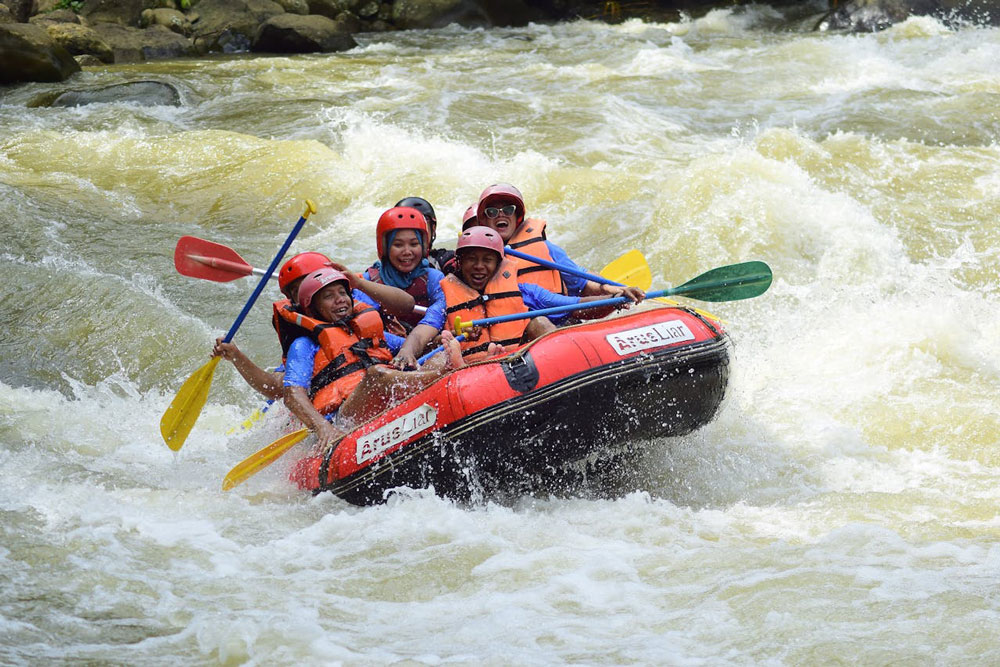
When is the Rafting Season in Nepal?
The rafting season aligns with optimal river conditions and favourable weather.
The best months for rafting are typically from September to early December and from March to May. During these periods, the rivers are full, yet not overly intense. Monsoon season, from June to August, is generally avoided. Due to high water levels and unpredictable flood conditions, it's very dangerous.
Seasonal Highlights
Understanding the seasonal highlights helps you choose the best time for rafting.
Pre-Monsoon Season
The pre-monsoon season, from March to May, is ideal for rafting in Nepal. The rivers are well-fed from the end of the winter, offering exciting conditions. The weather is typically clear and pleasant, making this a popular time for rafting.
Additionally, spring is a pretty good time in Nepal to enjoy any activities. It includes the White River Rafting too.
Monsoon Season
During the monsoon season, from June to August, river levels rise due to heavy rains. This creates powerful and unpredictable rapids, which can be dangerous for all. Additionally, heavy rain can lead to muddy and less enjoyable conditions.
Hence, it’s safe to say that this season is not ideal for whitewater rafting at all. As even the experienced will have the utmost difficulties with it.
Post-Monsoon Season
The post-monsoon season, from September to February, offers lower water levels. Yet, it provides stable river conditions. The weather is colder, and the rapids are less intense. This makes it a good time for a more relaxed whitewater rafting experience. This period is great for those looking for less adrenaline but still a fun adventure.
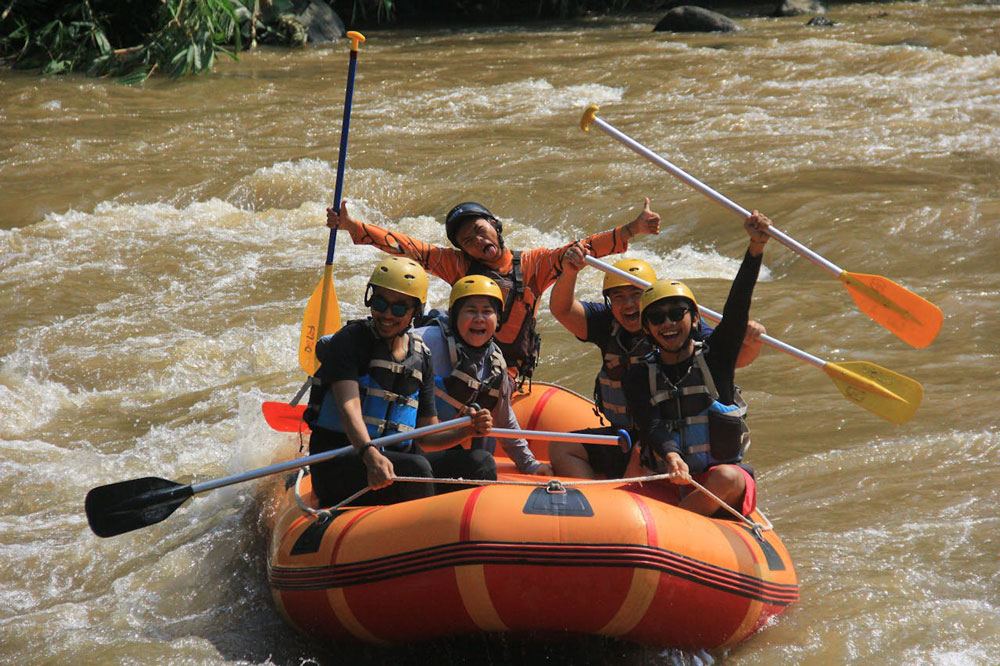
Top 10 Places for Whitewater Rafting in Nepal
Exploring the top rafting spots in Nepal reveals some of the best places for adventurers. Each location offers unique experiences and varying levels of challenge. Knowing the best places can help you choose the perfect river for your rafting journey.
Trisuli River
Location: approximately 70 kilometres (43 miles) west of Kathmandu
Starting Point: Charaudi
Ending Point: Kurintar
Rapids: Moderate to Challenging (Class II-IV)
Best for: Beginners and Experienced both
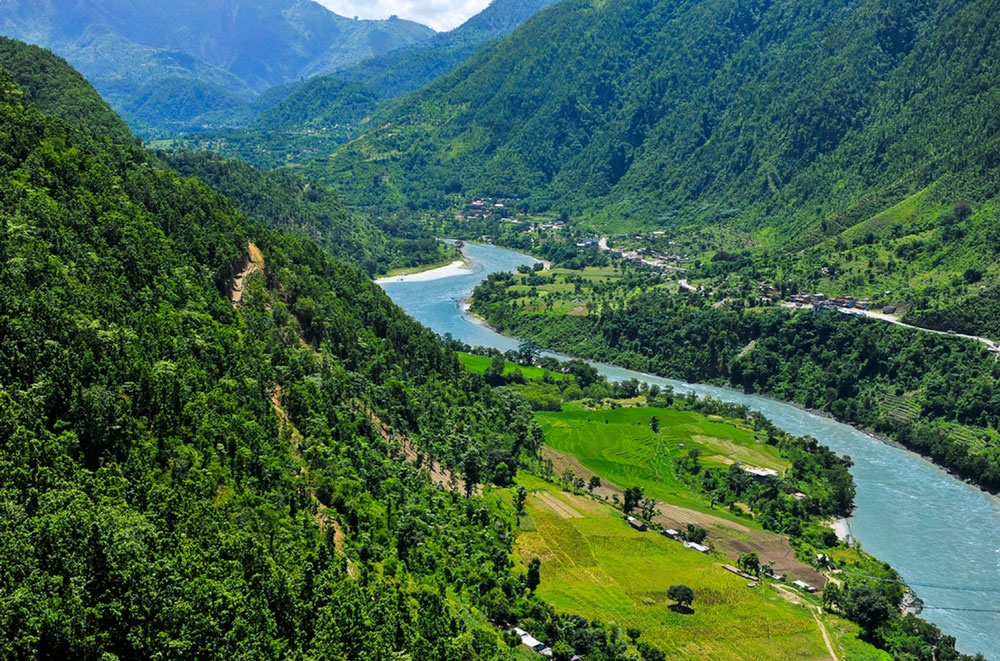
The Trisuli River is one of the popular choices for rafting in Nepal. It is known for its easy accessibility from Kathmandu and exciting rapids. It is located in central Nepal and offers a mix of thrilling and manageable sections. This can come under your day trips as you can do within a single day.
Rated as a Class II to IV river, it provides a balanced challenge for all rafters. It's close to Kathmandu and Pokhara, which makes it an easy option for those looking for a quick adventure. The scenic beauty and varied rapids add to its appeal, making it a favourite among rafting lovers. Additionally, travellers can get this trip extended towards the Chitwan National Park.
Bhote Kosi River
Location: approximately 95 kilometres (59 miles) east of Kathmandu
Starting Point: Lamosanghu
Ending Point: Dolalghat
Rapids: Moderate to Challenging (Class III - V)
Best for: Beginners and Experienced both
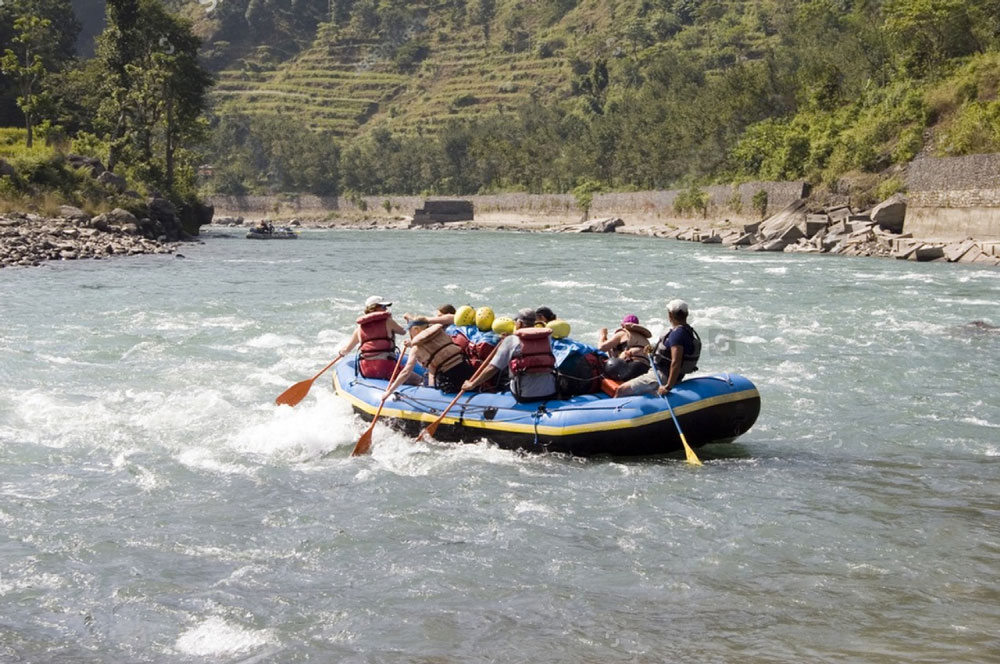
Bhote Kosi River provides an enjoyable experience with its challenging rapids and stunning views. Located in eastern Nepal, it is known for its intense and thrilling sections.
Rated as a Class III to V river expedition, it features some of the most demanding rapids in the region. The river's narrow gorges and breathtaking scenery add to the adventure. It makes it ideal for experienced rafters seeking a high-thrill experience. Its remote location also ensures a more adventurous and less crowded trip.
Upper Seti River
Location: approximately 53 kilometres (33 miles) south-west of Pokhara
Starting Point: Damauli
Ending Point: Gaighat
Rapids: Moderate to Challenging (Class II and above)
Best for: Beginners and Experienced
The Upper Seti River is an excellent choice and a popular river for beginners and families seeking adventure. Its calm waters and gentle rapids make it perfect for beginners.
Located in western Nepal, the Seti River Expedition offers stunning views of lush landscapes and majestic mountains. With its Class II to III rapids, kayaking here provides a safe and enjoyable experience for all ages.
Kali Gandaki River
Location: approximately 70 kilometres (43.5 miles) from Pokhara
Starting Point: Near Beni
Ending Point: Mirme
Rapids: Moderate to Challenging (Class IV-V continuous rapids)
Best for: Experienced
The Kali Gandaki River is renowned for its dramatic rapids and extremely remote areas. The Kali Gandaki River flows through the world's deepest gorge. Making it one of the geographically unique places.
This river, with Class IV to V rapids, offers a thrilling experience for seasoned rafters. Its remote location in central Nepal adds to the adventure. It also provides an untouched natural setting and breathtaking views.
Sun Koshi River
Location: approximately 55 kilometres (34.2 miles) from Pokhara
Starting Point: Dolalghat
Ending Point: Chatara or before
Rapids: Moderate to Challenging (Class III-VI)
Best for: Beginners and Experienced
The Sun Koshi River is known for its multi-day rafting adventures and diverse rapids. This river offers a comprehensive rafting experience. Along with varying levels of difficulty over several days by staying in camp or even remote villages.
Rafting on the Sun Koshi includes exciting Class IV to VI rapids and peaceful stretches of the country. Along the journey, you can enjoy the stunning scenery. And unique cultural encounters with local villages and communities as well.
Marsyangdi River
Location: approximately 66 kilometres (41 miles) from Pokhara
Starting Point: Besisahar
Ending Point: Bimal Nagar
Rapids: Moderate to Challenging (Class IV-V)
Best for: Experienced
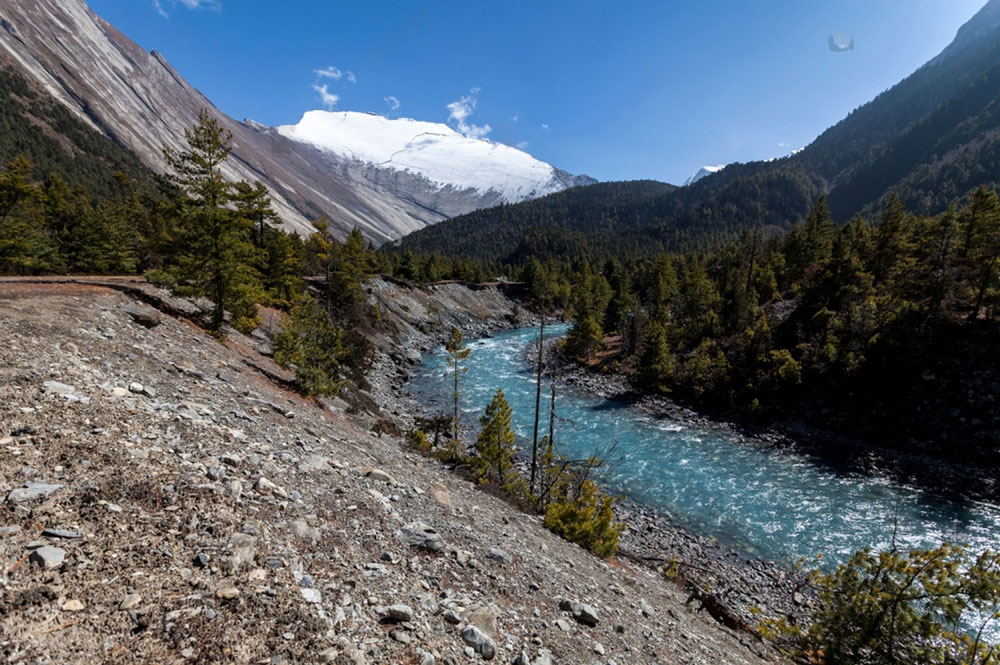
The Marsyangdi River is celebrated for its technical rapids and dramatic landscapes. It provides an intense rafting experience with challenging sections and beautiful scenery.
This river, rated as Class IV to V, is best suited for rafters looking for a high-adventure experience. The steep gradient and technical rapids make it a thrilling choice. Especially, for those seeking a test of skill amidst stunning, rugged scenery.
Tamor River
Location: approximately 51 kilometres (31.7 miles) from Pokhara
Starting Point: Basantapur
Ending Point: Chatara
Rapids: Moderate to Challenging (Class III-V)
Best for: Experienced
The Tamor River offers a unique adventure by combining rafting with the Kanchenjunga trekking. After you complete the mountain adventure, Tamor is easily accessible. You can get into the waters right after you arrive in the lower lands of Dhankuta.
This river flows through a remote and wild area, originating from Mt. Kanchenjunga itself.
With Class III to V rapids, the Tamor River provides a thrilling ride through stunning landscapes. It is perfect for those seeking both a challenging rafting experience and the chance to explore Nepal's remote wilderness. The combination of trekking and rafting makes for a memorable and exciting journey.
Karnali River
Location: approximately 395 kilometres (245.5 miles) from Pokhara
Starting Point: Surkhet
Ending Point: Chisapani
Rapids: Moderate to Challenging (Class IV-V)
Best for: Experienced
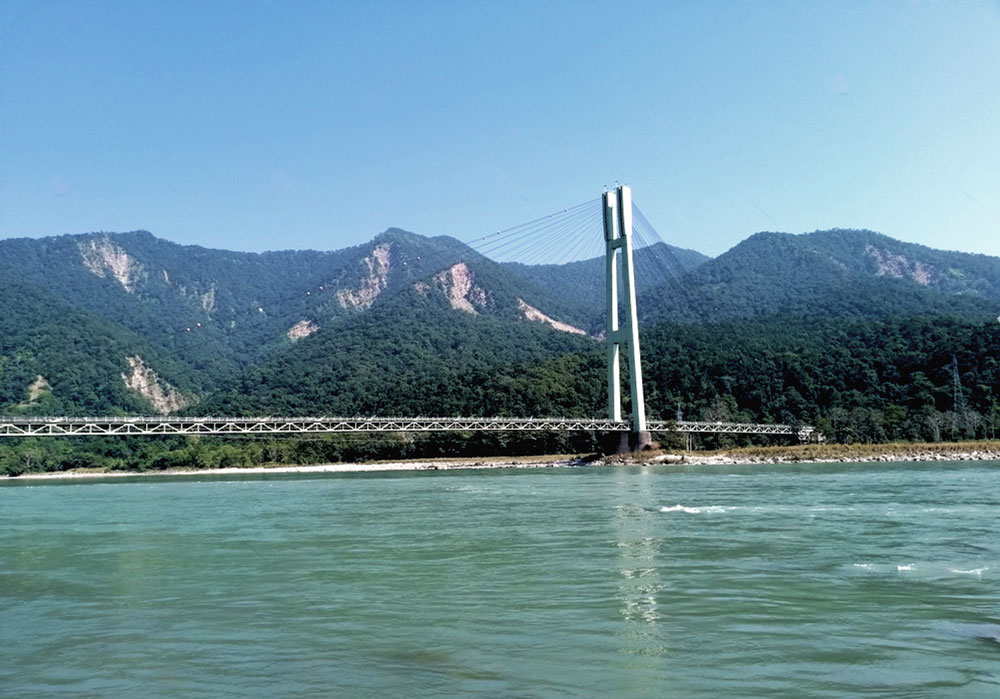
The Karnali River is one of Nepal’s longest and largest rivers, known for its continuous rapids. The Karnali River runs through several districts. Being the largest river for rafting, you have many places to start the rafting trip. Thus, there is usually not a particular point to start as it depends on choices. A rafting trip here provides an adventurous journey through some of the wildest sections in the region.
Rated as Class IV to V, the Karnali River offers intense rapids and thrilling challenges for experienced rafters. Along with its exciting rapids, the river passes through pristine wilderness. Allowing for rare wildlife encounters. Rafters may spot wildlife such as the rare Bengal tiger and the elusive gharial crocodile along the riverbanks.
Arun River
Location: approximately 260 kilometres (161.5 miles) from Kathmandu
Starting Point: 45 mins down from Tumlingtar
Ending Point: Chatara
Rapids: Moderate to Challenging (Class IV-V)
Best for: Experienced
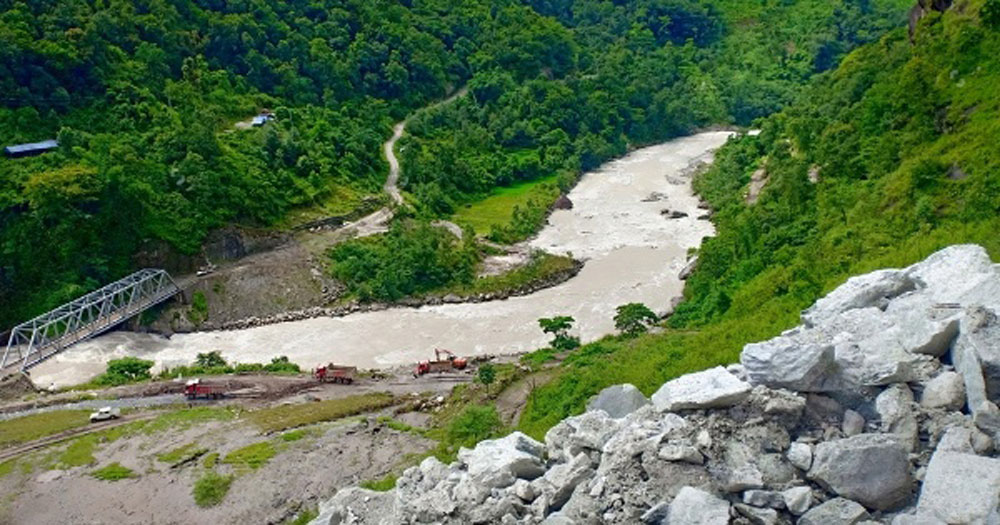
The Arun River offers a unique, off-the-beaten-path rafting experience, ideal for adventure seekers. It's located 45 minutes down from Tumlingtar. And the pristine environment provides a sense of untouched wilderness.
With Class IV to V rapids, the Arun River presents challenging and exciting conditions for experienced rafters. The river flows through beautiful, unspoiled landscapes, adding to its appeal.
Bheri River
Location: approximately 338 kilometres (210 miles) from Pokhara
Starting Point: Samjhighat
Ending Point: Bardia National Park
Rapids: Moderate to Challenging (Class III-IV)
Best for: Experienced

The Bheri River is a lesser-known gem offering a unique rafting experience. It combines challenging rapids with serene and untouched surroundings.
The Bheri provides an exciting adventure for those looking for something different. Its remote and tranquil environment adds to the allure. Which makes it a perfect choice for those seeking both thrill and peace away from the usual crowds.
Planning Your White Water Rafting Adventure in Nepal
Knowing what to consider can help you choose the best options for your trip. Proper planning is key to enjoying your adventure. This can include selecting the right river to understanding safety measures.
How to Choose the Right River
Choosing the right river for your rafting adventure includes your experience and desired thrill level. It's important to match your skills with the river's difficulty.
For beginners, rivers with Class II to III rapids, like the Seti River, offer a more manageable experience. Advanced rafters might prefer challenging Class IV to V rivers, such as the Bhote Koshi. Personal preferences, like scenic beauty or remote locations, also play a key role in making your decision.
What to Pack for a Rafting Trip
Packing for a rafting trip is essential to ensure a safe and enjoyable experience. Having the right gear and clothing will keep you prepared for any conditions.
Quick-dry clothing
Wetsuit
Sturdy water shoes
Life jacket (provided)
Helmet (provided)
Paddle (provided)
Sunscreen
Dry bag for personal items
First aid kit
Conclusion
Nepal offers some of the best white river rafting trips in the world with its diverse rivers and thrilling rapids. From the challenging Bhote Koshi to the Seti, each river provides unique adventures and stunning landscapes from single-day to multi-day trips.
Book your rafting trip today to explore Nepal's incredible rivers.

